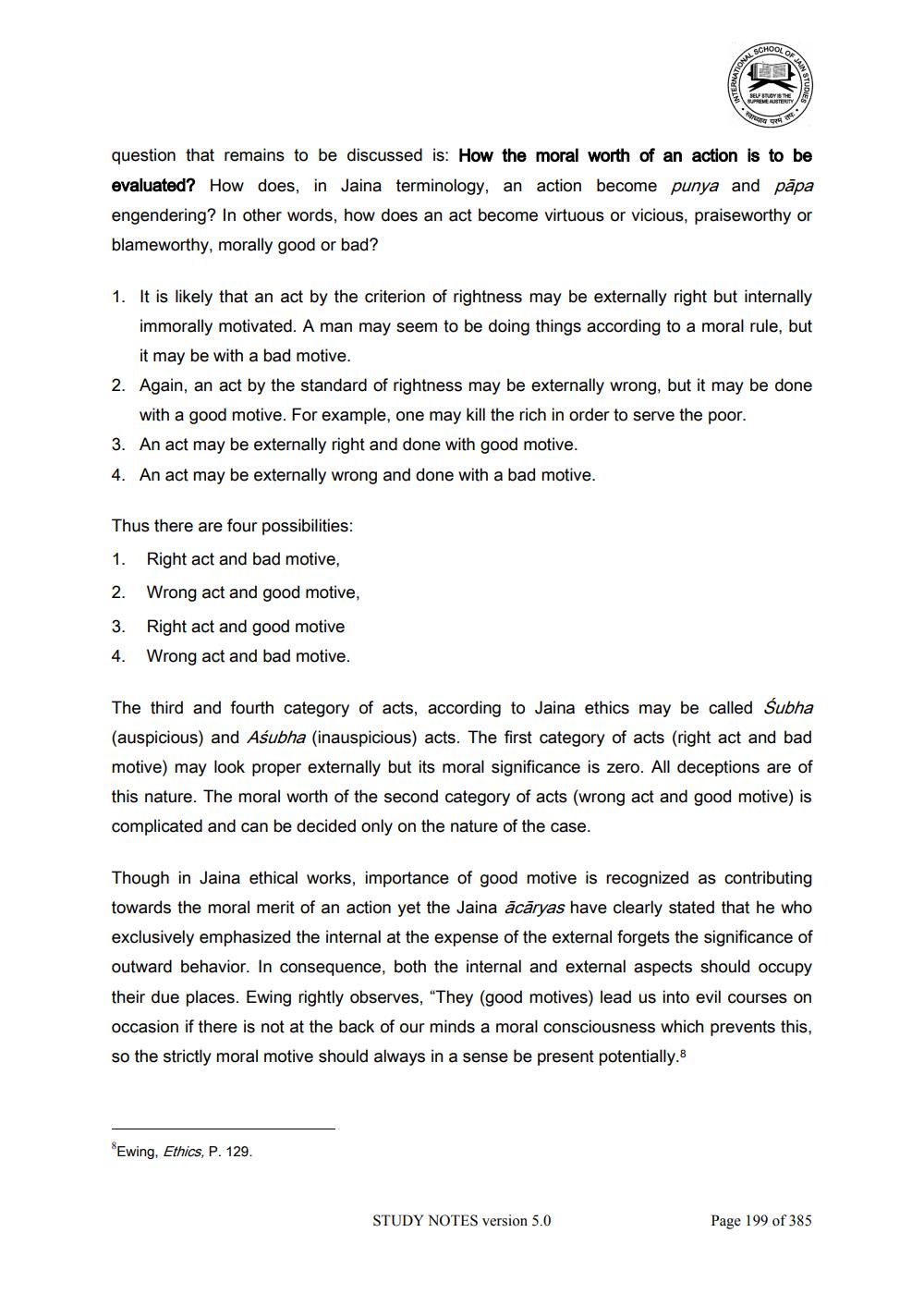________________
Thus there are four possibilities:
1. Right act and bad motive,
2. Wrong act and good motive,
3.
Right act and good motive
4. Wrong act and bad motive.
SCHOOL
OF
question that remains to be discussed is: How the moral worth of an action is to be evaluated? How does, in Jaina terminology, an action become punya and papa engendering? In other words, how does an act become virtuous or vicious, praiseworthy or blameworthy, morally good or bad?
SELF STUDY IS THE SUPREME AUSTERITY
Farenga
परमे
1. It is likely that an act by the criterion of rightness may be externally right but internally immorally motivated. A man may seem to be doing things according to a moral rule, but it may be with a bad motive.
2. Again, an act by the standard of rightness may be externally wrong, but it may be done with a good motive. For example, one may kill the rich in order to serve the poor.
3. An act may be externally right and done with good motive.
4. An act may be externally wrong and done with a bad motive.
Ewing, Ethics, P. 129.
STUDIES
STUDY NOTES version 5.0
The third and fourth category of acts, according to Jaina ethics may be called Subha (auspicious) and Asubha (inauspicious) acts. The first category of acts (right act and bad motive) may look proper externally but its moral significance is zero. All deceptions are of this nature. The moral worth of the second category of acts (wrong act and good motive) is complicated and can be decided only on the nature of the case.
Though in Jaina ethical works, importance of good motive is recognized as contributing towards the moral merit of an action yet the Jaina ācāryas have clearly stated that he who exclusively emphasized the internal at the expense of the external forgets the significance of outward behavior. In consequence, both the internal and external aspects should occupy their due places. Ewing rightly observes, "They (good motives) lead us into evil courses on occasion if there is not at the back of our minds a moral consciousness which prevents this, so the strictly moral motive should always in a sense be present potentially.
Page 199 of 385




